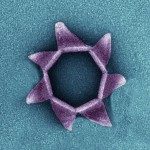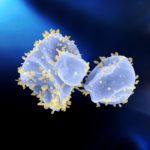Lien vers Pubmed [PMID] – 23140888
Trends Microbiol. 2013 Jan;21(1):1-5
Many laboratories are actively studying the abundance and roles of viruses in natural ecosystems. In these studies, the presence and number of viral particles is usually determined using fluorescent dyes. However, DNA associated with membrane-derived vesicles (MVs), gene transfer agents (GTAs), or cell debris can produce fluorescent dots that can be confused with viral particles. We suspect that fluorescence counting can lead to overestimation of virus numbers and even suggest the presence of viruses when there are none. Future studies in environmental virology should acknowledge this point and consider how to bypass this problem. Besides trying to improve discrimination between virions and MVs, we suggest adopting less holistic approaches, focusing on the detection of known virus groups and the isolation of new viruses from a broader range of hosts.



